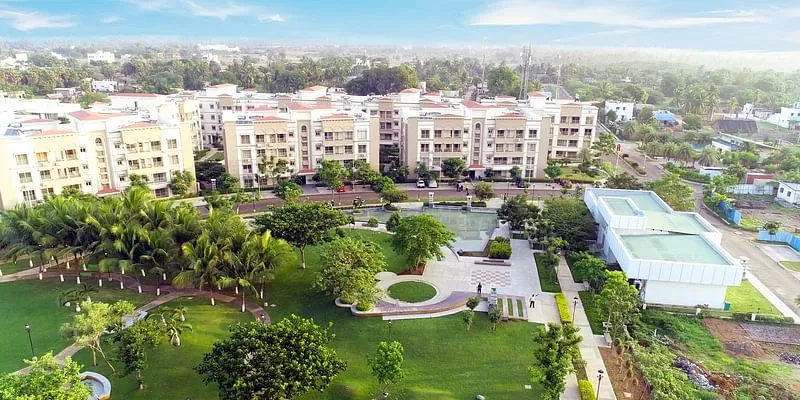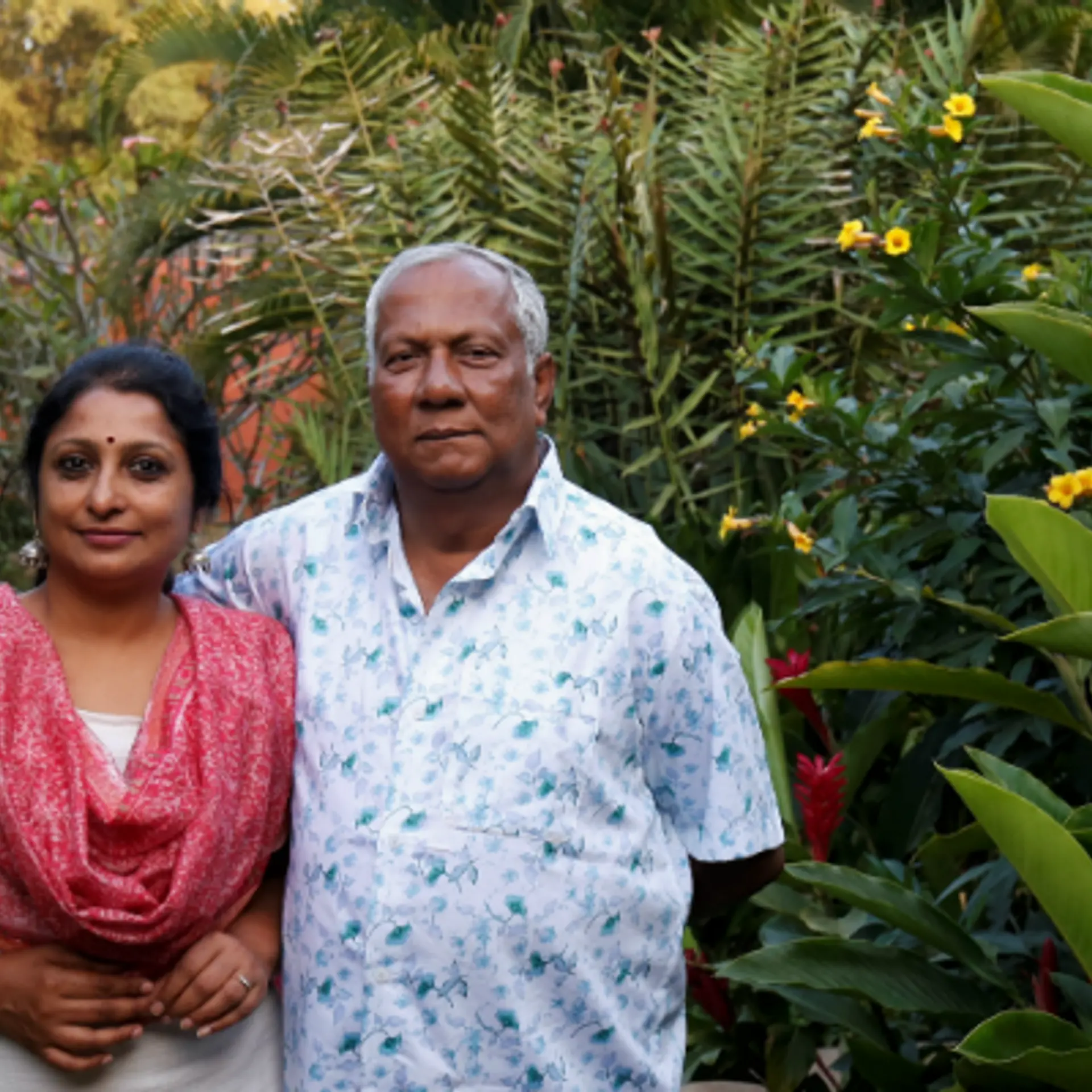How this mid-income housing company grew to Rs 650 Cr revenue after six co-founders quit
Ashiana Housing is now a well-known mid-income housing developer, with a focus on kid-centric homes, senior living, care homes, and comfort homes. The family-run business did sales worth Rs 650 crore in FY 2019-20, and has around 850 employees.
In 1979, as India inched closer towards free market capitalism and economic liberalisation, Patna-based Om Prakash Gupta noticed a big business opportunity.
He observed middle class Indians on the hunt for good quality housing. But it was hard to find mid-income apartments, especially in Patna. The demand for good quality construction and affordable apartments was not being met by current developers.
To solve this problem, he got together with six friends, who were engineers, to start Ashiana Engineers, a mid-income housing development company, in 1979. Each co-founder invested Rs 70,000 to kickstart operations.
“The company was to give to the middle-class home owner features that were seen only in higher income level group housing such as top quality construction, manicured lawns, expanse of greenery, children’s play area, swimming pool, club, etc,” says Ankur Gupta, son of late Om Prakash Gupta, and the current joint managing director of the company.
However, the presence of seven co-founders made things difficult for the company during its early years. It was difficult to take any decision due to differing viewpoints and ambiguity. In a few years, the other six co-founders parted ways with the company to explore other opportunities.
Realising that too many cooks spoiled the broth, Om Prakash Gupta decided to keep things simple. He took it upon himself to keep his vision going, and grew the company, now known as Ashiana Housing, into a well-known mid-income housing developer. It has a primary focus on kid-centric homes, senior living, care homes (i.e. assisted living), and comfort homes.
The family business, now headquartered in New Delhi, did sales worth Rs 650 crore in FY 2019-20, and has around 850 employees, Ankur says.

Ashiana directors (from left) Ankur Gupta, Joint Managing Director; Vishal Gupta, Managing Director,; Varun Gupta, Director
In an exclusive interview with SMBStory, Ankur recounts the early days of Ashiana, and explains how his late father grew the business into a large real estate developer.
Edited excerpts from the interview:
SMBStory (SMBS): What were the early days like for your father Om Prakash Gupta and his new company?
Ankur Gupta (AG): My father and six other partners started the company in 1979. It was initially named Ashiana Engineers. In 1984, due to too many viewpoints from multiple partners, they separated from the company. That year, it was officially named Ashiana Housing.
In 1985, my father expanded the business into Jamshedpur, and in 1992, into Bhiwadi, Rajasthan. The company went on to be listed on the BSE in 1993.
During the initial years, my father used to visit the projects he developed. He ended up becoming disappointed with the upkeep and maintenance of some of his housing projects. This concerned him, and he started wondering what could be done about this.
The head of maintenance from Jamshedpur suggested my father introduce maintenance services. Thus, Ashiana started taking the onus of consistently maintaining the projects it delivered.
SMBS: What were the challenges faced in the initial years?
AG: Whenever the company expanded into a new region, it would take some time to understand and gauge the dynamics of that region.
When my father entered Jamshedpur, he had limited resources. The region had never seen apartments before, and so our first project there did not do well. The sales would be soft in other new regions we entered as well. We would develop more projects than what was sold, and this created a pressure on our finances.
But we continued being resilient and giving value to customers. Fortunately, Oil India came up to us and bought 20 units. My father was relieved. Then, in Bhiwadi, we sold only 12 units in the first year. An industry named SICPA bought many units, and this solved the problem.
In the recent years, sales have dropped to about 7 lakh square feet from our target of 20 lakh square feet. However, last year we bounced back and sold 20 lakh square feet.

The Ashiana Housing leadership team
SMBS: How did Ashiana Housing diversify into other mid-income housing categories?
AG: My father was visiting his brother’s factory in Bhiwadi when he noticed shabby-looking government housing. This inspired him to enter Bhiwadi in 1992 and set up mid-income housing.
Another key moment was when he noticed senior citizens’ desire to live in an affordable, green, and pollution-free environment. Hence, in 2005, he decided to introduce senior living communities in Bhiwadi. In 2011, we launched our first assisted living project, Utsav Care homes, in Bhiwadi.
We also conceptualised and launched kid-centric homes in 2015. These homes have libraries, facilities for playing sports such as basketball, tennis, football, badminton, table tennis, and more. They also have skating rinks, swimming pools, parks, and spaces for dance, music, theatre, etc.
SMBS: What are some of your unique business strategies?
AG: One of our USP is our maintenance team. Right from the start, we have had a philosophy of consistently maintaining our projects. During our maintenance, we have got one project repainted four times, upgraded electrical systems as the buyers wanted more ACs, added CCTV cameras, gyms, bus stops, etc., to give our projects an up-to-date and modern feel.
This is a unique proposition because not many developers offer maintenance services. Besides two or three of our projects, we maintain all the others.
Our business model is a fairly integrated one. We have an in-house sales team and construction team. We consider land as a raw material, so we do not do land banking (aggregating parcels of land for future sale or development). This keeps us fairly cash rich. We also have a strong balance sheet.

An Ashiana Housing project
SMBS: What is the process for project development that the company follows?
AG: First, we identify a location where we can add value through developing the mid-income housing project. Then, depending on the location, we prefer doing a joint venture with the land owner. We then design the project from the customer’s perspective.
We take the required approvals and permits from the government. Then we do the pricing, positioning, and marketing. We then develop and complete the construction of the project in phases. Post completion, we carry out maintenance and also provide resale and rental services.
Our project pricing lies largely in the range of about Rs 35 lakh to Rs 70 lakh, and some are around Rs 1.3 crore.
SMBS: How has COVID-19 affected your business and growth? What are your future plans?
AG: Just like every other business, we have also been impacted by COVID-19. We enforced precautionary measures for staff, residents, and visitors to maintain the best hygiene and safety. We are consistently screening all visitors and residents at entry gates for fever. Our helpdesk is very alert, and our helpline is ready to assist in case of medicines, groceries, and other services.
In fact, during the lockdown, we witnessed high levels of participation from our community residents in helping each other stay connected and rekindle passions and interests. While following the norms, our projects have ensured undisrupted network connections, planned various social activities like online yoga classes, meditation, gardening, cooking sessions, dance and singing sessions, etc.
Our staff is frequently sanitising all possible common touch points, and is taking care of personal hygiene. We have organised mobile ATMs and vegetable vendors for customers. We are also making sure milk and newspapers are delivered.
We want to continue adding value to our customers’ lives, and so, we will be concentrating on our existing projects, and the two projects newly launched in Jamshedpur and Jaipur. We also are looking at expanding into the Kolkata market soon. Senior living is another sector we are trying to do more projects in.
Edited by Megha Reddy










